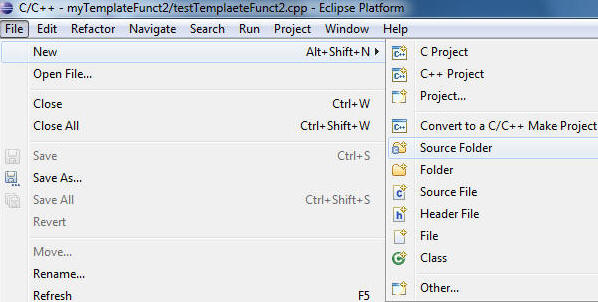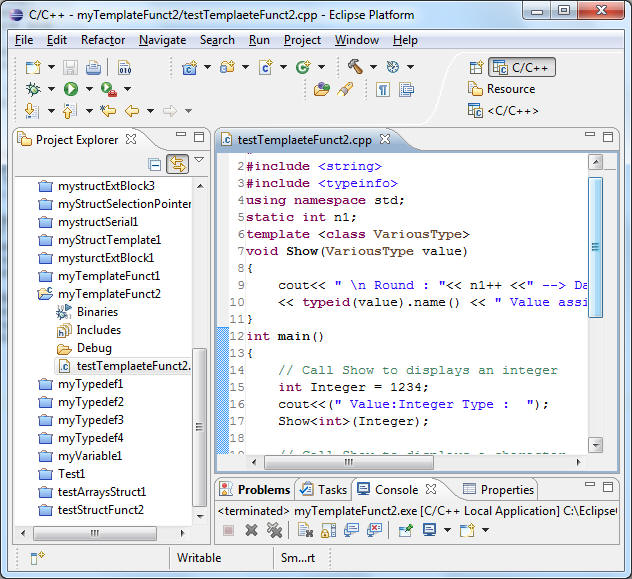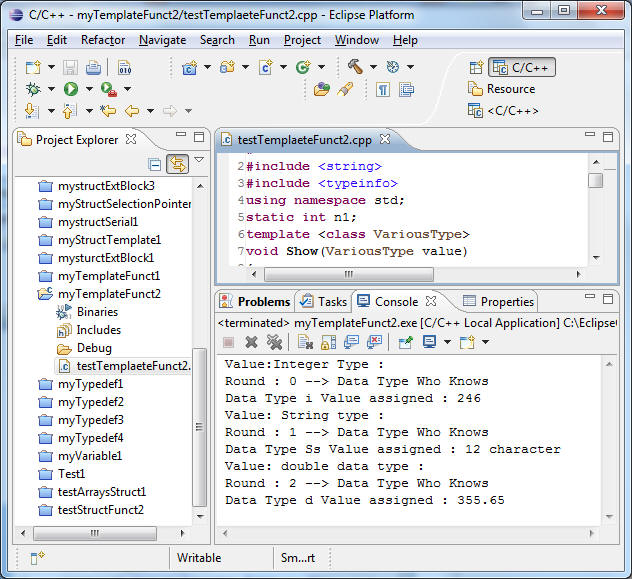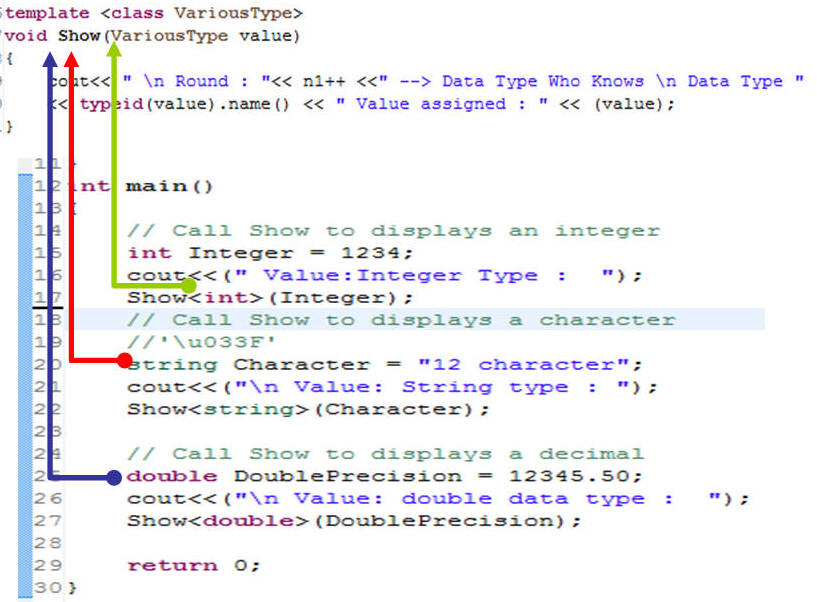Objectives :
- Compare with this example myTemplateFunct1.htm
- In the current example template class "name as you like" replaced a function which was overwritten in the last example.
- Rules explained
- template <class Parameter> ReturnType FunctionName(Argument(s)) { }
--------------------------------------------
template <typename VariousType> void Show(VariousType value)
{- The template keyword, the class or typename keyword, the <, and the > operators are required. The object to the key word typename or class can be your choice , and usually the programmers simply use the letter T.
- Next to <> enclosure, the ReturnType and Function rules are obeyed On the right side of the class keyword, type a name that follows the rules of names in C++.
- generic keyword can be used in .Net platform.
- Passing template parameter as an argument
void Show(VariousType value)
{
cout<< " \n Round : "<< n1++ <<" --> Data Type Who Knows \n Data Type "
<< typeid(value).name() << " Value assigned : " << (value);
}
Step: 1 Create a project
Step: 2 Create a source file
Step: 3 Edit Source code myTemplateFunct2.txt
Step: 4 Runtime View : d is data type id for double data type.
Step: 5 FYI only : Note template "class VariousType" handles series of overridden functions in the previous example. myTemplateFunct1.htm





